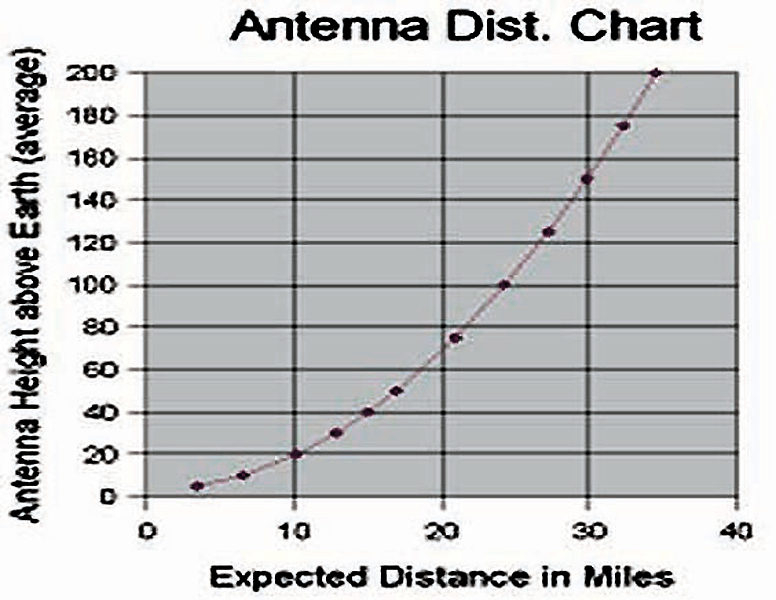|
How To Use This Chart
Take a height closest matching your actual
height or desired height of Station (1), and do the same for station (2), then add the two distances. Example two people
using Handy Talk Radios. Both would be about 5 feet off the ground. Each would have an expected range of about
3.4 Miles. The Total Range would then be 6.8 Miles above average flat Earth without hills, buildings, and or trees.
The more things in your transmission path, will lesson your signal and range. (Asumming you are using at least 5 Watts or
more.)

A COMMENT ABOUT MATH...
I know most of may have grown up thinking that most math we learn in school has no real value
that applies to every day life. However I found that is not the case when I was setting up this page. I found with the
help of an article from QST article, that I would need to learn how to use the "Pythagarean Therom." Simply put,
C = sruare root of ( A2 + B2). Doesn't sound too useful until you realize, you take the radius from the center of the
earth to the surface, (convert to feet) and the same again, but you add the height above earth that the antenna will be located.
This will from A2 + B2. Add these together and then get the square root, and you will have your answer, but will have more
meaning if you now convert feet to miles.
This was just one of many examples. It is used a lot with a cashier (finding the correct
change after entering the wrong amount in a register. Or how fuel effient your car is, and deciding if you should keep
it because of gas prices. Or building a tuned dipole for your favorite frequency. How many squarefeet your room
has that you want to tile or carpet. You know what they say, "knowledge is Power." I argue that math shows you
how to use that power. Only with math have we figured out how to go into outerspace, or to build a plane, or even a
nuclear bomb. I periodic table of elements have specific numbers attached to them for compairative, diagnostic,
and mathmatical reasons. Computers are almost all math. Binary code is nothing more than math based on "1's" and
"0's." This is used to control everything from pictures, sounds, operating systems, and even the letters on your screen.
The abillity to conquer math is one of the big things that separates us from the animals.
|

